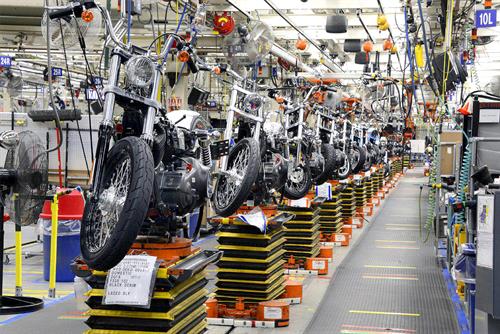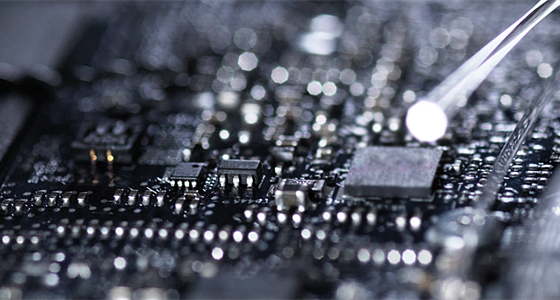Internet of Things: how it can be useful for business
The Internet of Things (IoT) is penetrating new areas. More and more industrial enterprises are showing interest in IoT technologies and the possibilities of their application in their own business processes. Analysts even see that the industry in the next six years will be one of the drivers of growth in this market.
We decided to analyze the dynamics of market development and based on real cases to look at the potential of the Internet of Things for business.
The Internet of Things: A Brief History
The term "Internet of Things" was first coined in 1999 by RFID researcher Kevin Ashton. The very concept of the Internet of Things dates back to the late nineteenth century.
The most common opinion is that the emergence of the Internet of Things as a mass phenomenon should be conducted from the moment when the number of devices connected to the Internet exceeded the population of the Earth. This happened between about 2008 and 2009.
The main essence of the Internet of Things was very vividly and meaningfully described by Blake Burnette at the IoT World conference in 2016: 'Imagine Facebook for devices. Each of them has its own page on the social network and can post information on the wall that other devices will read'.
This simple definition clearly describes the complexity of loT. After all, these are devices that have gone online and interact with each other, and the method of connection – M2M (machine to machine), and the big data that these devices generate and in the future can become the basis for decision-making. With the spread of technology in industry, the concept of "industrial Internet of Things" (IIoT) came into use.
Globality in numbers
The main factors that stimulate the active development of the Internet of Things, according to PwC experts are: reducing the cost of computing power and data technology, a rapid increase in the number of connected devices, the development of cloud technology and big data.
Cisco estimates that by 2023, 28 billion devices will be connected to the network. 66% of the world's population will use the Internet. Each will have about 3.6 devices connected to the network.
By 2025, according to the IDC, the average annual figure for data generated by IoT devices will be about 79.4 zetabytes. In terms of this – 79.4 billion terabytes, or 29.4 trillion gigabytes huge array of data.
At the same time, a significant part of the data will be generated not by ordinary users, but by business structures. That is, the industrial Internet of Things. According to the analytical portal Statista, in the five-year perspective, the industrial Internet of Things market will grow from $ 77.3 billion to $ 110.6 billion in 2025.
What are the benefits of the Internet of Things for business
The Internet of Things opens up a number of opportunities for business.
Improving operational efficiency. The Internet of Things with a variety of sensors and analytics software allows you to determine how equipment works, whether downtime occurs, in what shift most products are made, and so on. Data analysis helps to optimize the use of resources and increase the efficiency of business processes.
Take, for example, Amazon, which uses the Internet of Things for logistical purposes. Just imagine the Amazon distribution center in Arizona covers an area of 28 football fields. Drones and special packaging robots are used here to optimize the search, packaging and shipping of goods. This approach has reduced the company's costs by 20%.
A new level of customer service. The Internet of Things offers a number of different ways to increase the level of customer service – from service based on data analytics to the creation of personalized products and services.
A striking example of the use of IoT solutions to respond quickly to customer requests – Harley Davidson. The manufacturer has installed sensors on the equipment that monitor each stage of product collection. Thanks to this, the company managed not only to reduce downtime and equipment failures, but also to establish custom assembly of motorcycles. The client is offered to choose a model with the possibility of its customization from more than 1300 options. Thanks to this approach, the production cycle was reduced from 21 days to 6 hours. The company's share price rose from $ 10 in 2009 to $ 38 in 2021.

Resource monitoring and preventive maintenance.
With Internet of Things solutions, you can even predict potential equipment failures before they can affect production. This proactive approach has its advantages - extending the life of the equipment, optimizing the production process, improving working conditions.
And IoT solutions will help automate the inventory process in warehouses. For example, Walmart uses a drone to photograph huge areas of the warehouse, then the system processes the images, compares them with previous data and issues a report on the occupancy of the warehouse, the remains of a particular product, and so on. All this in one day. Previously, such work required several weeks.
New business models and revenue.
The Internet of Things transforms traditional business models and opens up opportunities to provide services based on information from a variety of real-time sensors. For example, an American aircraft engine manufacturer has attached sensors to power plants that allow them to receive data about their condition online, thus saving the company millions of dollars on their maintenance.
Development forecast
The pandemic has slowed the development of the Internet of Things. IDC analysts have even lowered their estimate of market growth from 14% to 8% in 2020. It is quite natural, because companies around the world were forced to organize remote operation and focus on solutions for separate access and monitoring.
However, from 2021, as IDC is convinced, the market will begin to recover and return to previous rates of development. The Internet of Things will be most active in China, the United States and Western Europe, which will account for three quarters of all investments in this segment. The main drivers of growth in the next six years, the American publication CRN calls the industry and the automotive industry.




